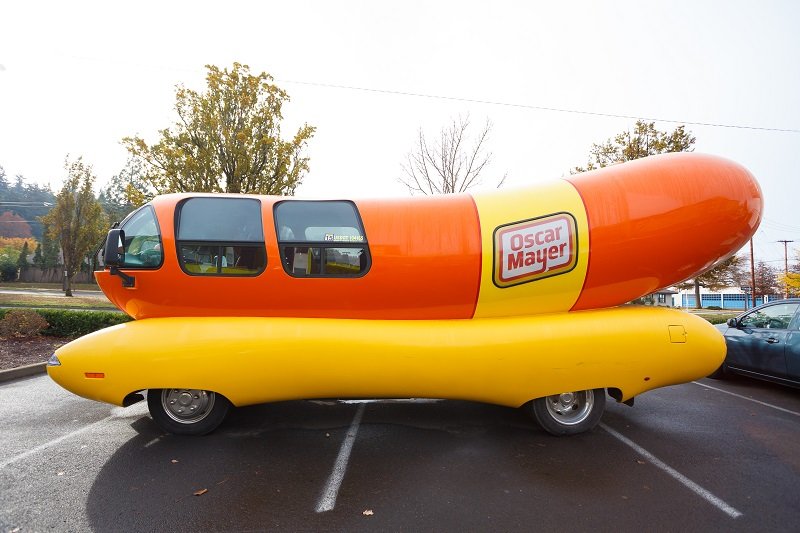Experiential Marketing 101 | Everything You Need to Know
In the modern world, where people are increasingly becoming busier, brands are quickly losing personal touch with their customers. TV commercials, roadside posters, and ads don’t make an impact anymore. Consumers now want something more unique, personalized, and valuable. This is where experiential marketing steals the show.
Experiential or engagement marketing is the reason why big brands are always on our minds. They have found a way to deepen their roots into our culture, so they become a part of our own experiences, growth, and lifestyle.
Experiential Marketing: A Brief History
While this brand awareness and engagement marketing concept may sound new, the irony is that it has been in existence for more than 125 years, maybe even longer. During the 1893 Chicago World’s Fair, brands like Pabst, Cracker Jack, and Wrigley’s were already using experiential marketing to drive brand awareness and connect with customers.
In 1936, the Wienermobile – a hotdog-like vehicle – hit Chicago’s streets with the driver, a “hot-dogger,” giving out toy whistles shaped exactly like the iconic vehicle. The brand awareness campaign, which promoted Oscar Mayer’s family hot dog business, became a benchmark for several other brands.

These are just a few examples of how far experiential marketing has evolved. Before we dig deeper, let’s see what an experiential marketing campaign is all about.
What Is Experiential Marketing?
Experiential marketing is a brand awareness strategy that brings people together to interact with the brand and create a life-long experience. In other words, people want memorable experiences. It’s also known as event/participation or live marketing because it aims to connect the people with the brand at a much deeper level.
Unlike the other marketing strategies that work on an instant-engagement basis, a successful experiential marketing campaign focuses on building awareness, relationships, and brand loyalty. Most businesses meet their customers to mingle, share experiences, and engage them through real-life activities and real world experiences.
Types of Experiential Marketing
Over the years, engagement marketing has evolved. Instead of limiting customer experience to physical product showcases and retail installation, we now have experiential marketing campaigns run virtually through social media and advanced technologies such as augmented reality.
Below are some examples of experiential marketing: classified based on the three categories.
- How the campaign reaches the audience – They are two ways. First, directly; being physically present with the customers/using augmented reality. Second, indirectly; using social media campaigns.
- The end user experience – This classification is based on the impact the marketing will have at the end of the campaign. For example, product showcases will have varying experiences from an immersive virtual reality experience.
- How the experience is delivered – These are tactics or modes through which experiential marketing creates the impact or experience. Examples from this classification include Guerrilla marketing, event marketing, visual merchandising and/or brand activation.
3 Signs Your Brand Needs an Experiential Marketing Campaign?
Your Brand’s Online Visibility is wanting
Social media is one place you can gauge the level of engagement or traffic and know if your online visibility needs a re-touch. Check if your Facebook or Twitter has a serious following and if people are actively engaging with the posts. If your social media followers are not bothered by your recent activities, the engagement is probably zero. This means nobody knows why your business exists, or your target audience isn’t interested in what you offer.
Marketing Budget and Sales Revenue Don’t Match
When the output from your marketing efforts doesn’t match the marketing costs, you have a problem that needs to be solved urgently. More often, this means your marketing is targeting the wrong audience, or it’s not solid enough to deliver the desired results. At this point, you may want to work more on your brand awareness. Showcasing your business to the people through some ingenious event marketing experiences could boost the brand’s market performance.

Competition is Quickly Catching Up
It doesn’t matter how old, experienced, or unique your company is: newer players with better marketing strategies will always emerge, ready to knock you off. When you start to see sales dropping unexpectedly, you want to check what the new players are doing. Sometimes you have to go back to the people and let them know you’re still in business and ready to amaze them with newer and better brand experiences.
Experiential Marketing Tactics: How to Create an Interactive Campaign
It takes effort and a taste for success to create a unique experiential marketing strategy that will sell and generate the expected results. We’ve studied the best engagement marketing strategies of our time and what the big and successful brands do when it comes to brand awareness campaigns. Here are some takeaways for you:
Identify Your Audience: Know Your Ideal Customer
Most brands assume what their customers want. They prioritize creativity and end up with a strategy that’s too fancy or irrelevant to their audience. Instead of focusing on the results, you want to pay attention to the process. Get to know your audience. What keeps them up at night? How can you align your value proposition with their unique challenges to create the perfect experiential marketing campaign?
But you can’t just sample a group of people and use the available data to model your strategy. Instead, study your ideal customer. Get to know their every-day experiences and use this vital information to create a winning customer engagement campaign.
Develop a Road Map
The only way to make an impact is to create value. If your audience can’t perceive value in what you are doing, it’s less likely that you’ll hit the target. Whether it’s a product showcase or brand activation, you want to communicate value, not product or service.
To avoid guesswork:
- Plan your experiential marketing campaign early enough.
- Where possible, launch a mock campaign using a small section of your audience and see the reaction.
- If your campaign involves forums or open workshops and even retail installations, make sure you have the necessary tools in advance.
It will also make a lot of sense if you consider flexible marketing tools that are modern, stylish, and cost-effective. For example, you can use digital signage instead of printed posters and banners to support your experiential marketing efforts. Such tools are versatile in that you can modify and customize texts to reinforce your selling prepositions and have the freedom to change them anytime.
Should You Go Digital? Analyze the Options before Diving In
There are several ways you can choose to spearhead your experiential marketing strategy. What you don’t want is to choose the wrong technology that your audience can’t access. For example, it’s easy to think, “We’re in a digital era,” and go on to launch a virtual product showcase that not even a quarter of your ideal customers will watch.
Going digital can save you a lot of money, but it will not make any sense if you don’t achieve the goal, i.e., to connect with your audience and build memorable brand experiences.
Before adopting some advanced technologies such as virtual reality, augmented reality, and live social media sessions, refer to the first strategy and ask yourself, “Who is my ideal customer.”
Your Marketing Message is Key
Most people confuse between a marketing message and the brand value proposition. More often, they will define a marketing message as a shorter version of the value proposition. And even worse, some will use the brand’s tagline or slogan.
Before experimenting with some brand messaging samples, first make sure they are memorable, concise, and targeted. The whole idea of crafting an experiential marketing message requires that you keenly evaluate how the brand talks about itself and the value it offers.
Find Advertisers to Boost Your Experiential Marketing Campaign
Depending on the niche you’re in, you can quickly identify promoters who will help you spread your marketing message faster and conveniently. Choosing the perfect influencer could mean spending a lot on one person instead of spreading the risks on several advertising campaigns.
There’s an advantage and a disadvantage to this. First, influencer marketing is one sure way of reaching a wider audience in the shortest amount of time. The con is that choosing the wrong influencer could compromise your entire marketing campaign. You can target the wrong audience and fail to maximize your ROI.
Branding and Ongoing Marketing
An experiential marketing campaign’s primary goal is to create exceptional customer experiences where the targeted audience connects with the brand. But what if the brand isn’t well-represented? One of the main reasons branding is essential to any business is a unique identity that gets the business easily recognizable.
Whether you’re introducing a new product or service or boosting an existing brand’s market reach, there’s a lot you can do as far as branding is concerned. If you’re new to this, you may want to start with branding basics: from creating a logo, a brand voice to selling your brand on the various social media channels.
Now that your brand has penetrated the market, ongoing marketing should be your next move. Successful companies do not stop marketing themselves. Running all the campaigns can be expensive and hectic, but that is what keeps your brand alive in your customers’ minds.
Why Experiential Marketing Works
There are several reasons why large businesses prioritize their brand-customer experience. Experiential marketing is at the heart of the top Fortune 500 companies, which isn’t by mistake. If you aren’t sure if this marketing strategy will work for you, here are the reasons why you should give it a try.

It Boosts Customer Loyalty and Trust
Trust in business is hard to come by. What experiential marketing does is build a solid foundation that nurtures customer loyalty. As more customers trust your company, its reputation grows, and people are more likely to do business with reputable brands.
Brand Recall Drives Purchase Decisions
Most customers will do market research before making a purchase. However, before making that critical decision, they are often lost for choices since several brands offer the same product or service. This is where brand recall comes in handy. If the prospects recall your brand, they will become your customers.
Proper Branding Gives Your Business a Purpose
If you do it right, branding will set your business apart from competitors. Branded companies are easily recognizable from the crowd, giving them a competitive edge in the market. A 2020 Zeno study reveals that consumers are four times more likely to purchase from a brand with a strong purpose. They are also 4.5 times more likely to recommend such companies to family and friends.
Budgeting Tips for Your Experiential Campaign
According to a 2019 EA Experiential Research Study, 53% of brand marketers expect a budget increase in their experiential marketing for the whole of 2020 and the better half of 2021. The research involved more than 600 marketing professionals across the Fortune 500 companies, vendors, and agencies. What’s interesting from the study is that:
- 83% of the marketers admitted that they invest in experiential marketing for lead generation.
- 20% of the brand respondents said they spent more than 25% of their marketing budget on experience in 2019.
Despite the increasing budgets, 69% of marketers said they continue to struggle to meet the ROI of events. Additionally, 68% of marketers, reported that registration and driving awareness are critical challenges during the brand awareness events.
According to Steve Randazzo of Pro Motion Inc., an award-winning experiential marketing agency, there are three ways you can run an experiential marketing strategy on a budget. These are:
- Prioritize authenticity over scale – tell a story to your audience relevant to them and true to your brand.
- Create your strategy from a consumers’ perspective –. Most brands become out of touch when they focus on what they want to create instead of what the customer wants. The idea is, you can’t see the picture when you are inside the frame. You need to get out of your “ideal” experiences (which in most cases reduces unnecessary expenses) and put the customer first.
- Take advantage of another event – You don’t need to initiate everything from the start. If you’re on a budget, you can find an event that speaks to your brand. Join forces with the other players, provided they aren’t your competitors. By capitalizing on emerging events and trends. You can amass a larger audience with a fraction of the cost you could incur trying to solo.
Common Experiential Marketing Mistakes
If you’re thinking of going creative with your engagement marketing techniques, watch out for these mistakes.
Making Assumptions
Apple made a huge marketing mistake in 2014 by giving people what they thought was an incredible gift – they added U2’S new album to more than 500 million devices. The results were frustrated customers searching for ways to get rid of the incredibly-hard-to delete music library.
If you can’t ask a section of your customers what they want, then take the time to test what works and what doesn’t. As much as marketing is concerned, don’t force free stuff on your prospects. It may spoil the whole experience, and you’ll have lost twice – resources and reputation.
Being Insensitive
Wanting to drive engagement and get people talking about your brand is a good thing. Painting your brand in a bad light is not. Always keep your brand off from sensitive topics that could illicit bitter emotions or experiences.
In 2017, Adidas had to apologize for their experiential marketing campaign gone wrong. As a follow up from the 2013 Boston marathon bombing, Adidas decided to launch a marketing campaign. Their message was “Congratulations; you survived the Boston Marathon”. Needless to say, this was perceived as insensitive and offensive to the many victims of the bombing.
Overdoing Your Experiential Marketing strategy
The campaign is supposed to be fun and engaging, but going overboard can hurt your good intentions. In 2007, Paramount Pictures launched an experiential marketing campaign that was supposed to delight fans and promote a new box-office hit. The company installed electronic devices in the Los Angeles Times’ news racks. The devices went off, causing a bomb scare. They had to call the bomb squad and the audience was scared. This lead to the president of Paramount Pictures being fired and the company having to pay $2 million in fines.
Summary
When it comes to building brand awareness, creating lively interactions, or building long-lasting relationships, no other strategy does it better than experiential marketing. The tips above will help you create the right customer engagement marketing campaign. Help prepare your budget, avoid mistakes, and anticipate any potential challenges.



